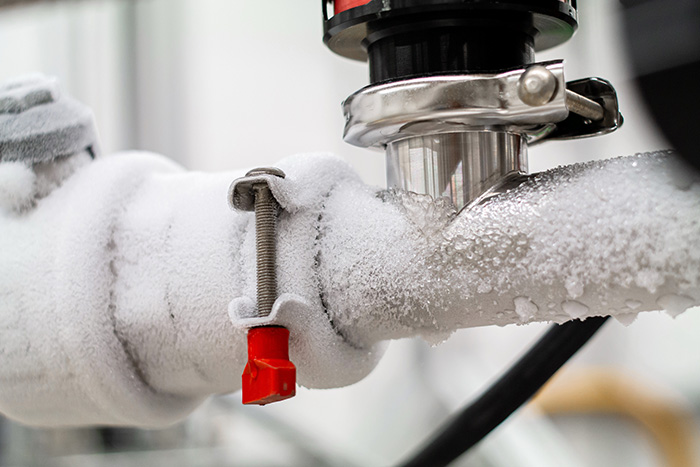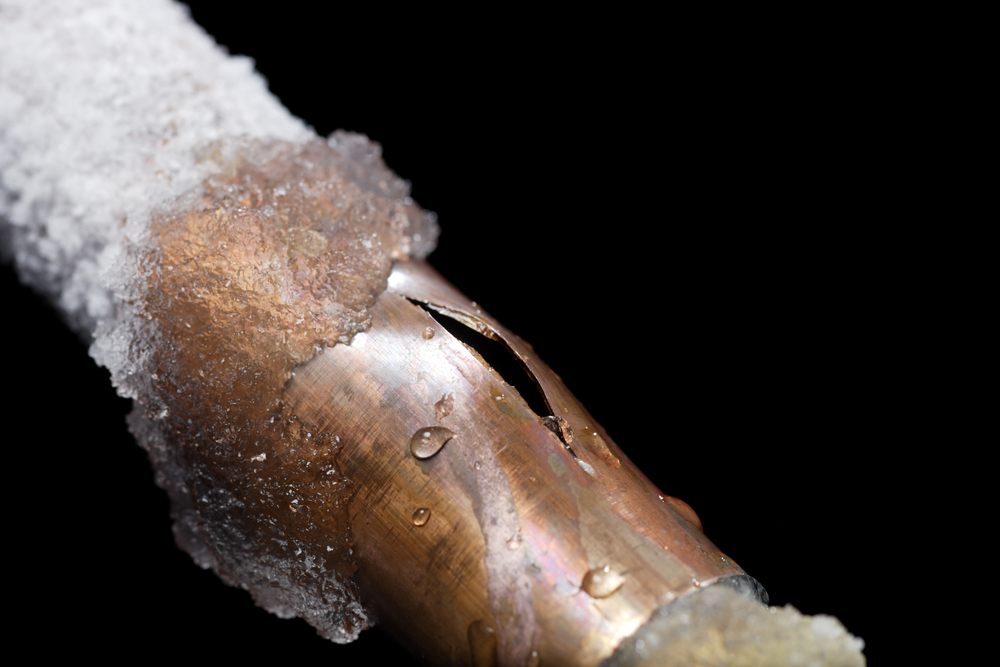Tips to Avoid Frozen Pipes in Winter: Pro Advice
Tips to Avoid Frozen Pipes in Winter: Pro Advice
Blog Article
The writer is making several great points about Preventing and dealing with frozen pipes overall in this great article in the next paragraphs.

Winter can wreak havoc on your pipes, specifically by freezing pipelines. Below's exactly how to stop it from occurring and what to do if it does.
Introduction
As temperature levels drop, the risk of frozen pipes increases, potentially causing pricey fixings and water damages. Recognizing just how to avoid frozen pipes is important for property owners in cold climates.
Avoidance Tips
Protecting susceptible pipes
Cover pipelines in insulation sleeves or use warmth tape to shield them from freezing temperatures. Focus on pipelines in unheated or exterior locations of the home.
Heating strategies
Keep indoor areas properly warmed, particularly locations with pipes. Open up cabinet doors to enable warm air to circulate around pipelines under sinks.
Just how to identify icy pipelines
Seek decreased water circulation from taps, unusual odors or noises from pipelines, and noticeable frost on exposed pipes.
Long-Term Solutions
Structural changes
Consider rerouting pipes away from exterior walls or unheated areas. Include additional insulation to attic rooms, cellars, and crawl spaces.
Updating insulation
Buy high-quality insulation for pipelines, attic rooms, and wall surfaces. Correct insulation aids preserve constant temperatures and decreases the risk of frozen pipelines.
Shielding Exterior Plumbing
Garden hoses and exterior faucets
Disconnect and drain pipes yard hose pipes prior to wintertime. Set up frost-proof spigots or cover outside faucets with shielded caps.
Comprehending Icy Pipes
What causes pipes to ice up?
Pipes ice up when subjected to temperature levels below 32 ° F (0 ° C) for expanded durations. As water inside the pipelines ices up, it expands, putting pressure on the pipeline walls and potentially creating them to rupture.
Threats and problems
Frozen pipes can bring about water system disturbances, residential property damages, and pricey repair work. Burst pipelines can flood homes and create substantial architectural damage.
Indications of Frozen Pipeline
Recognizing icy pipes early can avoid them from rupturing.
What to Do If Your Pipelines Freeze
Immediate actions to take
If you presume frozen pipes, keep faucets open to ease pressure as the ice melts. Use a hairdryer or towels taken in warm water to thaw pipes slowly.
Verdict
Stopping frozen pipelines calls for positive measures and fast reactions. By understanding the reasons, signs, and safety nets, property owners can shield their plumbing throughout cold weather.
5 Ways to Prevent Frozen Pipes
Drain Outdoor Faucets and Disconnect Hoses
First, close the shut-off valve that controls the flow of water in the pipe to your outdoor faucet. Then, head outside to disconnect and drain your hose and open the outdoor faucet to allow the water to completely drain out of the line. Turn off the faucet when done. Finally, head back to the shut-off valve and drain the remaining water inside the pipe into a bucket or container. Additionally, if you have a home irrigation system, you should consider hiring an expert to clear the system of water each year.
Insulate Pipes
One of the best and most cost-effective methods for preventing frozen water pipes is to wrap your pipes with insulation. This is especially important for areas in your home that aren’t exposed to heat, such as an attic. We suggest using foam sleeves, which can typically be found at your local hardware store.
Keep Heat Running at 65
Your pipes are located inside your walls, and the temperature there is much colder than the rest of the house. To prevent your pipes from freezing, The Insurance Information Institute suggests that you keep your home heated to at least 65 degrees, even when traveling. You may want to invest in smart devices that can keep an eye on the temperature in your home while you’re away.
Leave Water Dripping
Moving water — even a small trickle — can prevent ice from forming inside your pipes. When freezing temps are imminent, start a drip of water from all faucets that serve exposed pipes. Leaving a few faucets running will also help relieve pressure inside the pipes and help prevent a rupture if the water inside freezes.
Open Cupboard Doors
Warm your kitchen and bathroom pipes by opening cupboards and vanities. You should also leave your interior doors ajar to help warm air circulate evenly throughout your home.

I found that piece about How to prepare your home plumbing for winter weather when doing a lookup on the internet. Do you know somebody else who is sincerely interested in the niche? Be sure share it. I truly appreciate your readership.
Get Your Estimate Now Report this page